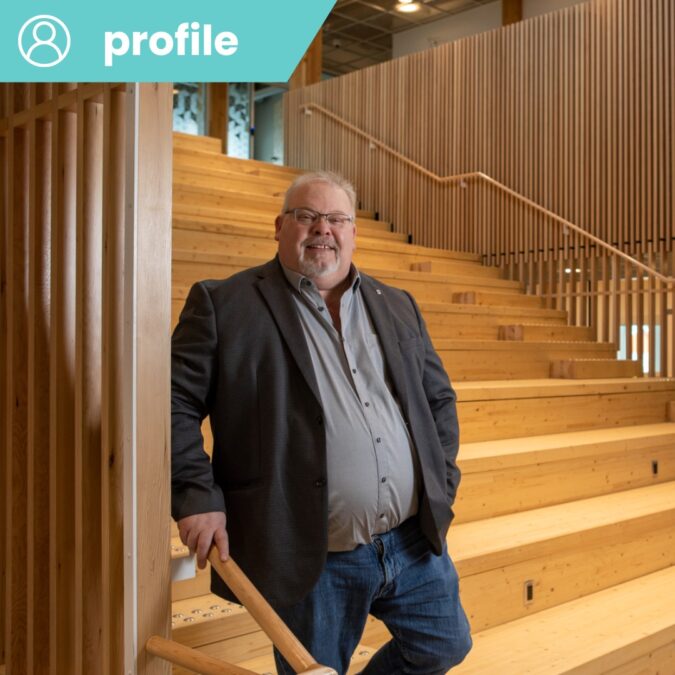Information
Name: Paul Chaulk
Organization: Northern Lakes College
Description / Background
Paul Chaulk, Senior Director at Northern Lakes College, oversees the operation of the college’s first net-zero campus in High Prairie, AB, achieved through geothermal and solar technologies. Paul foresees significant growth in the industry as energy costs rise and emerging technologies become more affordable. He anticipates technologies like 3D printing in construction will reduce costs, allowing organizations to redirect funds for achieving emissions-neutral goals.
Check out more about what Paul has to say below:
Q: Could you briefly introduce yourself and your background in the field of emissions-neutral buildings?
A: Paul Chaulk Senior Director, Facilities and Ancillary Services Northern Lakes College. We are in year two of operating the college’s first net zero campus at High Prairie, AB, achieved through a combination of geothermal and solar.
Q: How did you get involved in this industry?
A: My career in emissions-neutral buildings began as an Oil Burner Mechanic servicing and installing oil fired residential heating equipment, early in my apprenticeship I worked with a boiler manufacturer (Newmac Manufacturing) to install one of the first models of their boilers with sealed vent technology. This collaboration allowed me to accelerate my apprenticeship and complete it early.
After working in the industry in eastern Canada for several years I began working in the high Arctic and moved from Trades work to project administration, design, and development for the Nunavut Housing Corporation. I soon got involved in Housing projects that required an enhanced level of building performance to achieve energy efficiency goals and targets outlined in funding agreements. This led to training in R2000 building methods, and Building Energy Auditor training to ensure renovation and new construction projects met building envelope design targets. Working with dedicated building science teams at CMHC and serving as the northern construction representative for the CSA F326 Residential Mechanical Ventilation Systems, it was this combined exposure to a sensitive ecosystem and building sciences that led to an innate desire to make projects as energy efficient and cost effective as possible.
Q: What advice would you give to aspiring professionals who are interested in contributing to the development and implementation of emissions neutral buildings?
A: My best piece of advice I can offer would be to listen carefully to the Client and their stakeholders throughout the consultation process , even though there may be “better ways, means, equipment or technologies “ there could be any number of reasons why they want things a certain way or don’t use certain technologies. Picking up on minor details and subtle nuances during this process can help avoid problems or conflicts later in the design, development and implementation phases.
Q: What do you find most interesting/challenging/exciting about the job?
A: I think the most interesting and exciting aspects about the job are how fast technologies are evolving to address the issues around emissions neutral buildings. The advances in energy generation, storage, new improved building materials, and building methodologies coupled with the internet of things allowing faster more detailed communication and monitoring make for an awesome mix for innovation. I think throwing AI in as a catalyst will be a winning formula and will only aid in the advancement of emerging technologies.
Q: How do you see the industry progressing in the next few years?
A: As energy costs continue to increase and emerging tech becomes cheaper I think the industry is well positioned to grow significantly. I think technologies such as 3D printing buildings will reduce construction costs of the building or components allowing corporations and entities to redirect funds to better achieve emission neutral buildings


